As a big shipper of apples from the Wenatchee Valley, GN loved to promote National Apple Week with special menus, recipe cards, and in this case a blotter. This and the other blotters shown today are from the Minnesota History Center Great Northern archives.
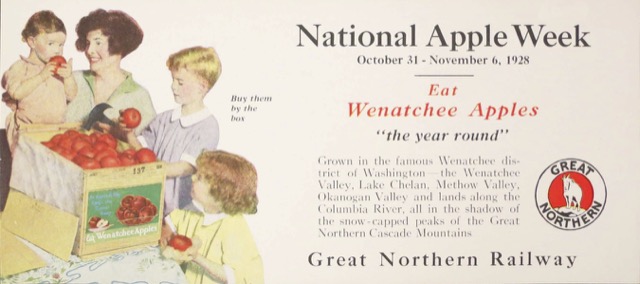
Click image to download a 266-KB PDF of this blotter.
The next blotter is similar but features raisins. Since few grapes were grown along GN’s route, this makes less sense–and raisin pie doesn’t sound very appetizing. Perhaps raisins were considered a delicacy in 1928.
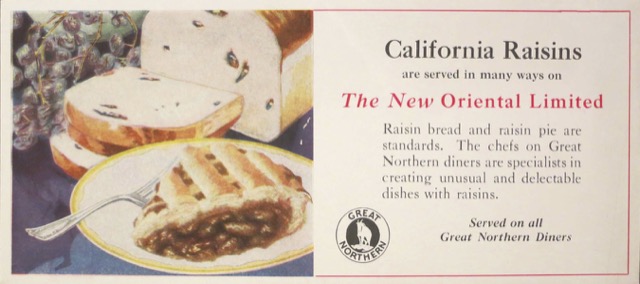
Click image to download a 283-KB PDF of this blotter.
The next two blotters feature the Great Northern’s R-1 locomotives, of which the railway can be justly proud. Not only were they some of the largest, most powerful steam locomotives ever built, they were the first locomotives built west of the Mississippi and the first to be built from scratch by any railroad, rather than one of the established locomotive builders.
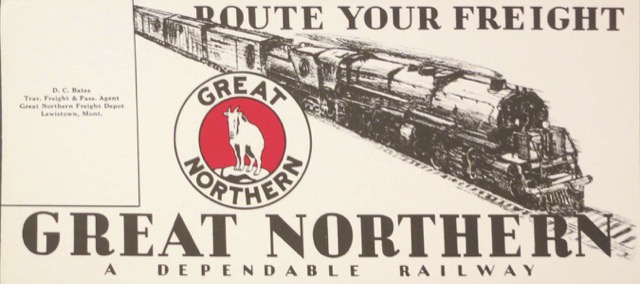
Click image to download a 295-KB PDF of this blotter.
GN ordered its first four R-1s from Baldwin in 1925. They were so successful that it decided to order ten more. But the foreman of GN’s Hillyard locomotive shop in Spokane persuaded President Budd that the railway could save tens of thousands of dollars by building the locomotives itself. As shown in the silhouette below, the locomotives had a 2-8-8-2 wheel configuration.
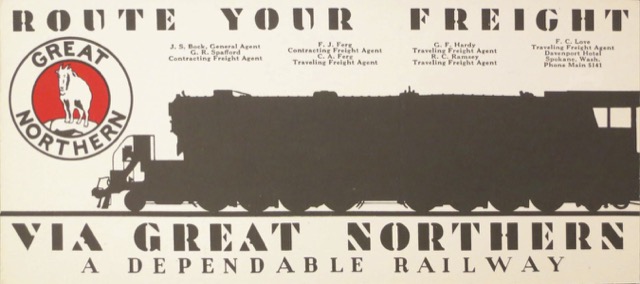
Click image to download a 295-KB PDF of this blotter.
The new locomotives were so successful that in 1929 GN asked Hillyard to build fifteen more that were longer, heavier, and stronger. These R-2 locomotives were, when measured by tractive effort, the most powerful steam locomotives ever built other than a few triplex (2-8-8-8-2) locomotives that were never very successful.
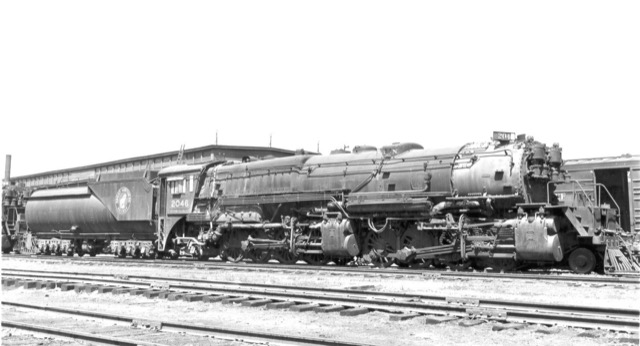
GN’s massive R-2 locomotive at Hillyard Shops. The main visible difference between this and an R-1 is that the trailing wheels are two feet further behind the rear drivers in order to accommodate a larger firebox. Click image for a larger view.
GN rated its 2-8-8-2s as producing 146,000 pounds of tractive effort, but GN used a formula that underestimated tractive effort by 10 percent compared with other railroads. Using the more common formula, these locomotives produced more than 160,000 pounds of effort. As far as I know, no locomotives other than the triplexes, which were limited to around 8 mph due to their inability to produce enough steam to sustain faster movements, exceeded 150,000 pounds; Union Pacific’s Big Boy produced about 135,000 pounds and Norfolk & Western’s Y5 produced under 127,000 pounds. At 592,000 pounds, the R2 also had more weight on its drivers than any locomotive other than, again, the triplexes.
Correction: According to Wikipedia, the Norfolk & Western Y6 locomotives were originally built to produce about 152,000 pounds of tractive effort, but were later rebuilt to produce 166,000 pounds, which would put them ahead of Great Northern’s R2s. Both the Y6s and R2s were 2-8-8-2 locomotives.
